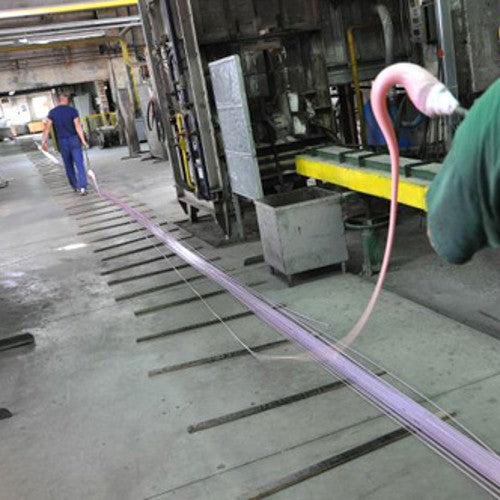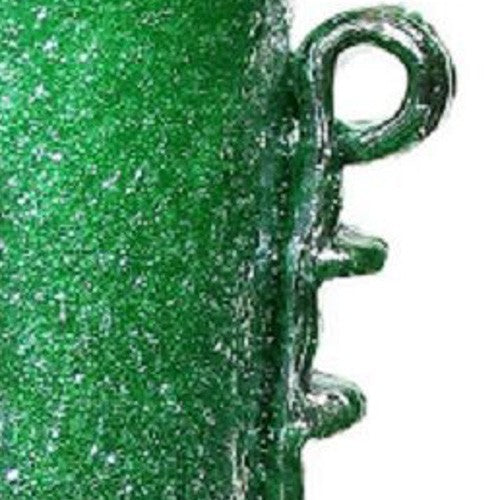Search
Categories
Archive
- September 2022
- February 2022
- September 2021
- May 2021
It could be defined as controlled incamiciato (a glass consisting of two or more superimposed layers of coloured and transparent glass). Mr Balbi uses different glasses and the...
Ghiacciato (frozen) or ghiaccio (ice), is a glass with a surface having a kind of "craquelure". The effect is obtained by plunging the semi-finished article into wat...
The guild of the glassworkers was one of several existing in Venice and was guided by a consiglio (board) with a main representative called gastaldo
It is a sort of metal tray with thick edges on which the glass pieces are put when they are finished and ready to be tempered. As the "farazza" fills up, the first pieces are pushed forward by the ...
Kind of glass in which the fusion step is projected not to reach the optimum point. This leads to a lack of homogeneousness of the molten mass that has inside it air bubbles made of slightly ...
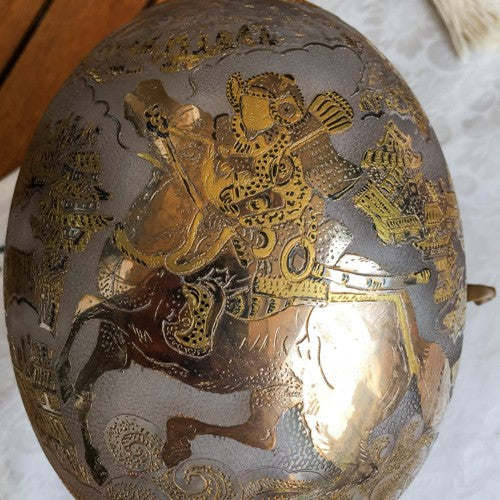
The corroso (corroded) is a type of glass whose surface is irregular to the touch due to the use of chemical agents (hydrofluoric and sulphuric acid in solution). Technically, ...
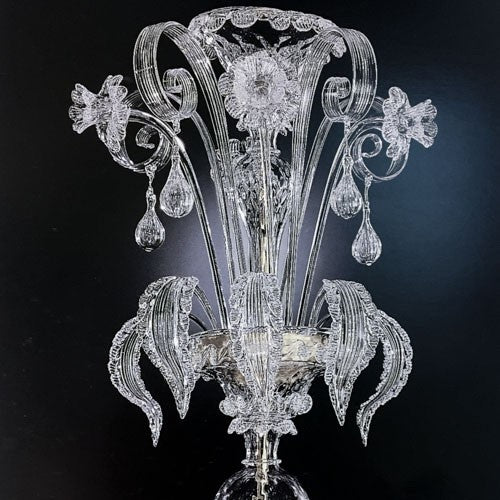
The Cimièr, also called Cimiero is part of the decorative elements of the Venetian chandelier. It is the upper part decorated with leaves and sometimes with flowers.
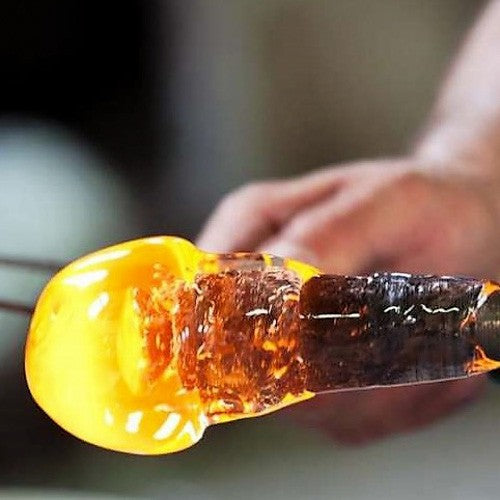
Murano term for the lump of molten glass that is lifted from the crucible with the rod.It is the incandescent ball of molten glass taken from the oven with the metal cane.
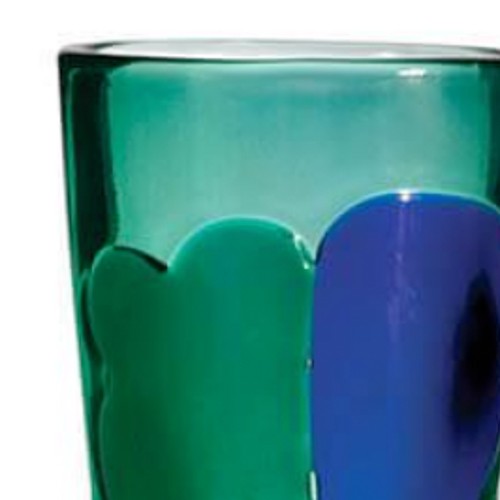
Consisting of a small number of bowls, vases and dishes with applied ribbon-shaped decorations, this series - designed by Carlo Scarpa for Venini - was exhibited for the first time at the 7th ...
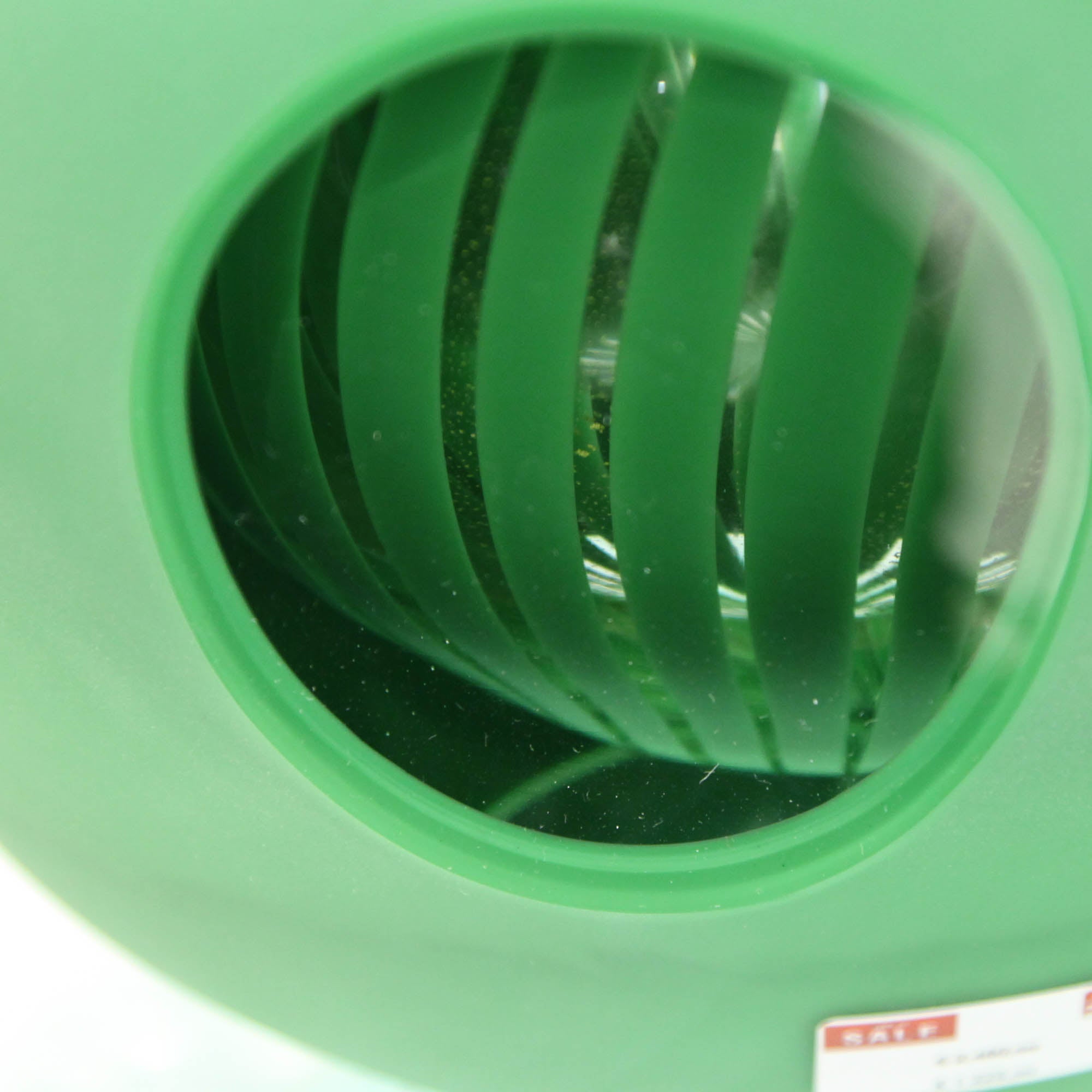
This is a glass consisting of two superimposed layers of lattimo glass and of coloured transparent glass on occasion with the submersion of gold and silver leaf so as to obtain an opaque effect. ...
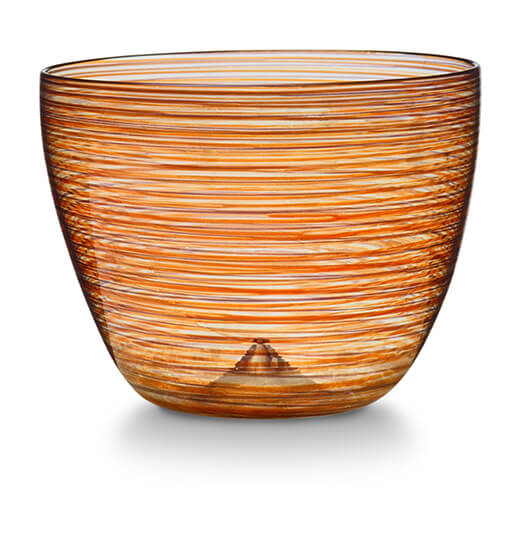
A small series of variegated glass objects was presented at the Venice Biennale in 1938, including two bowls created using a technique which Carlo Scarpa also employed in...
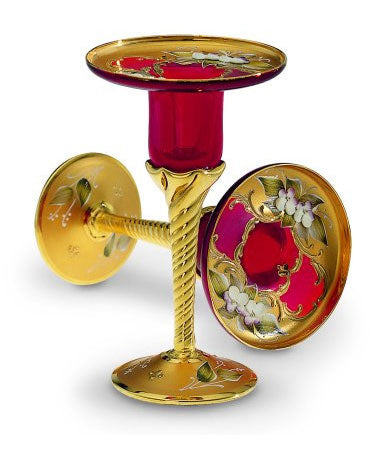
While up to the mid-nineteeth century every craftsman made his own enamel on the basis of very particular and jealously-kept recipes, it later became fashionable to adopt vitreous enamels produced ...
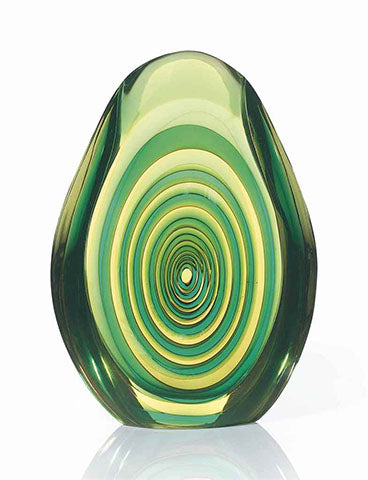
This is a glass invented by Flavio Poli in the early 50's at the firm of Seguso Vetri d'Arte . The procedure for its preparation is as follows: a large concentric-ri...
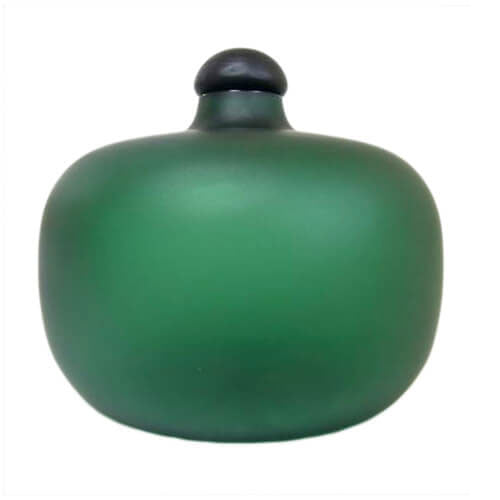
The typical surface of the velato glassware is finished with ultra-light grounding. Period magazines also dubbed these items “misty glassware” (“vetri appannati”), owing to their superficial ...
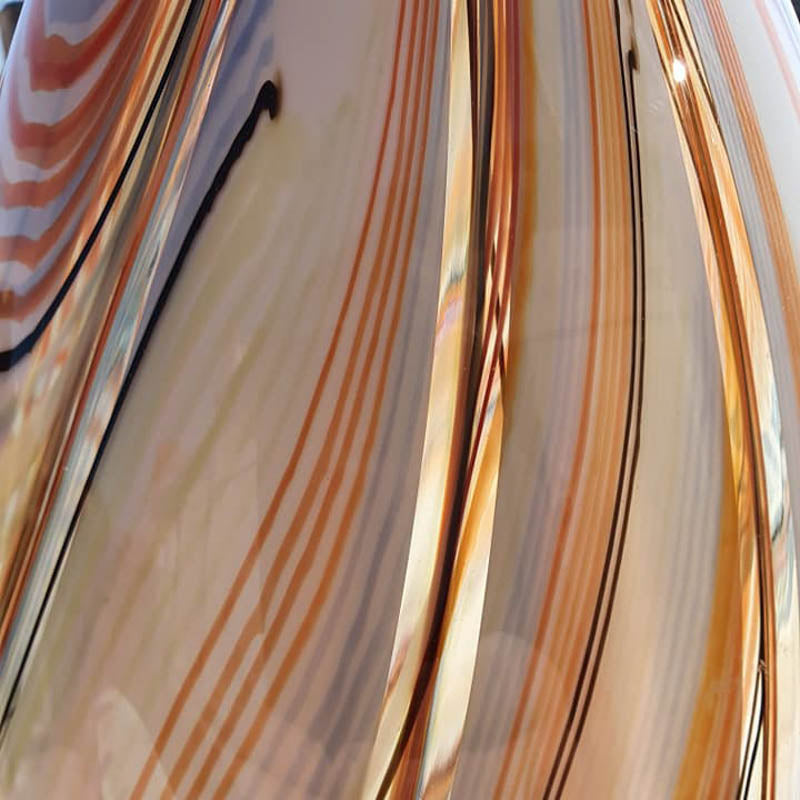
This is a glass coated with a thick layer of colourless transparent glass, or of a colour other than that of the back. The first real "sommersi" items were those designed by Carlo Scarpa for Ve...

